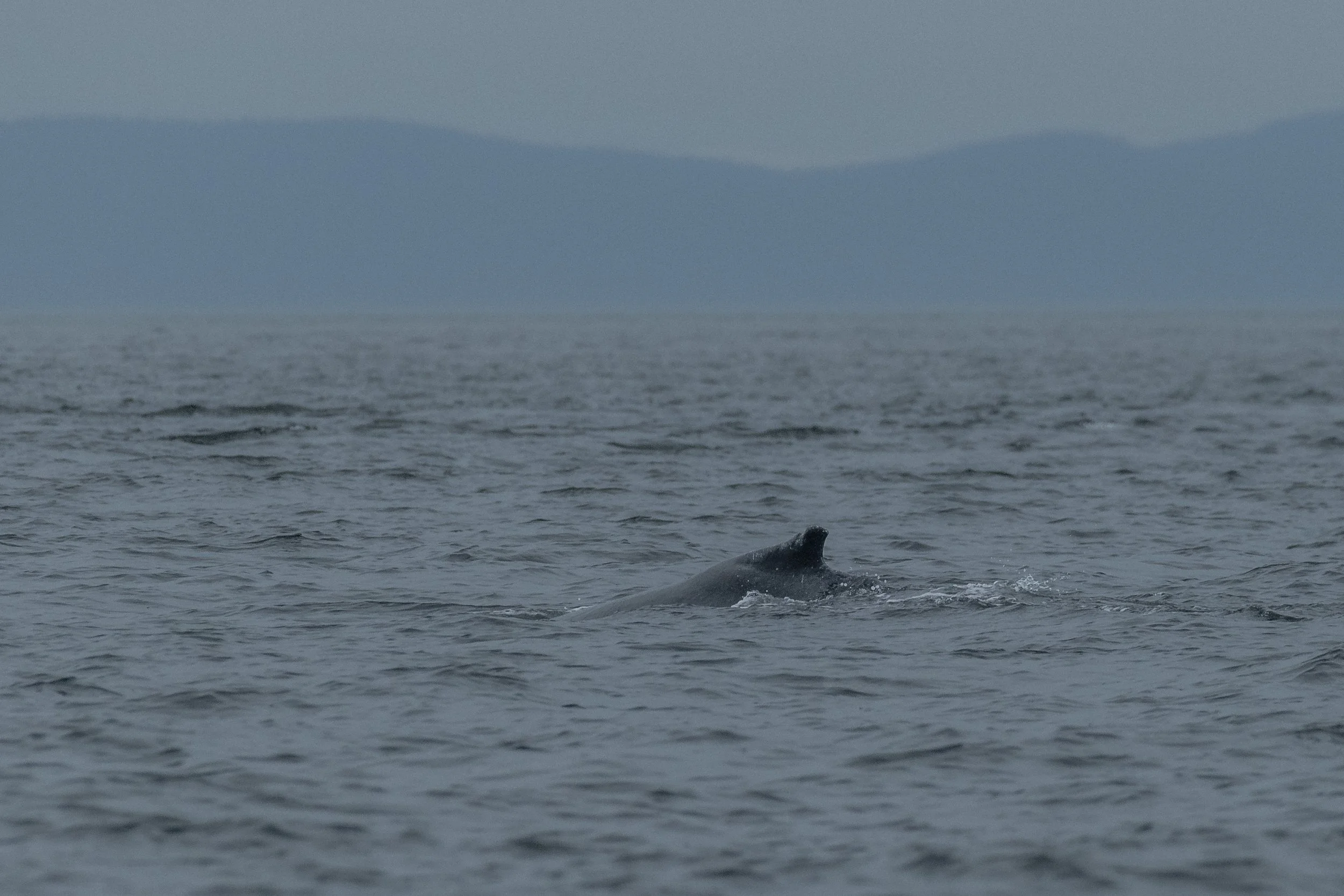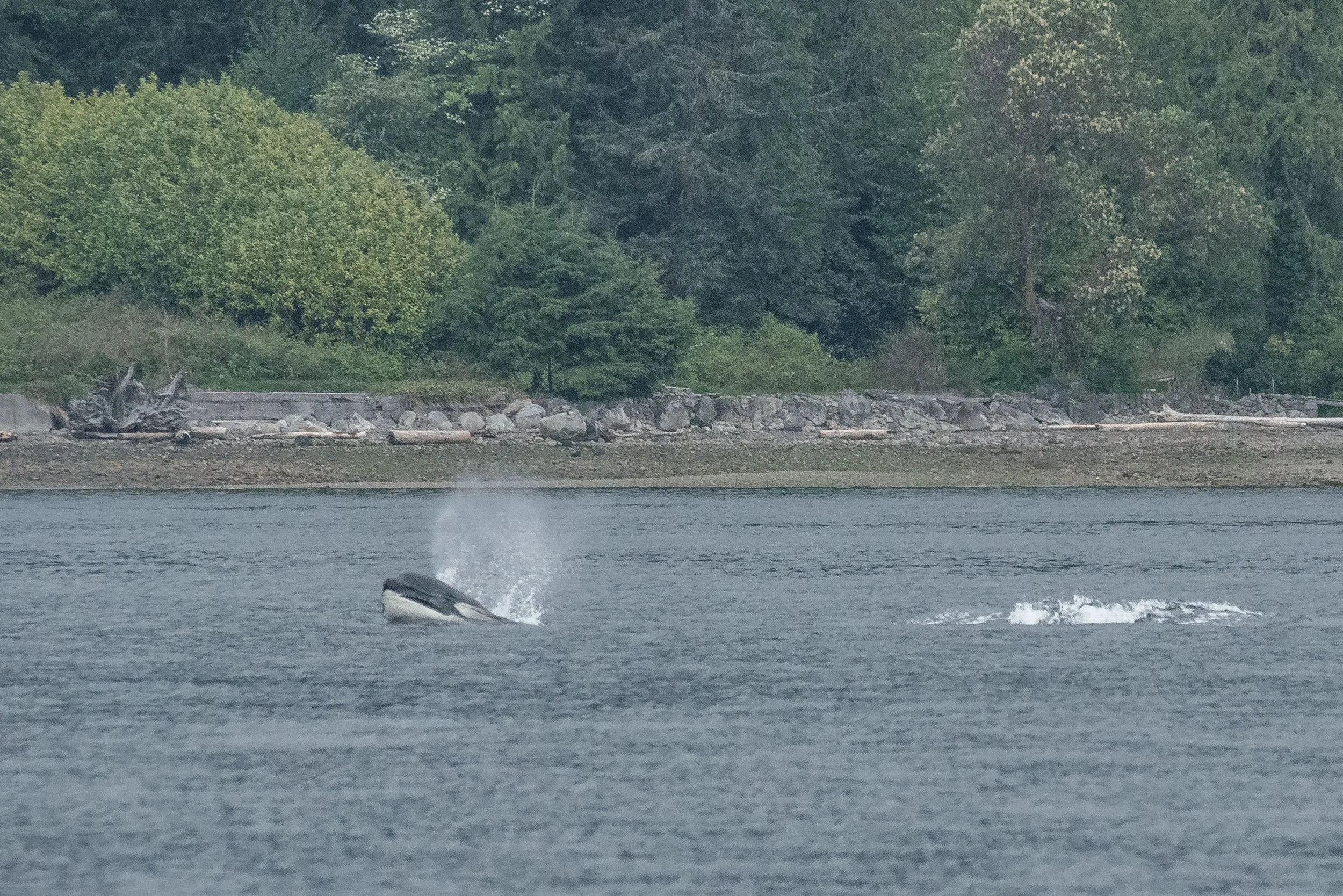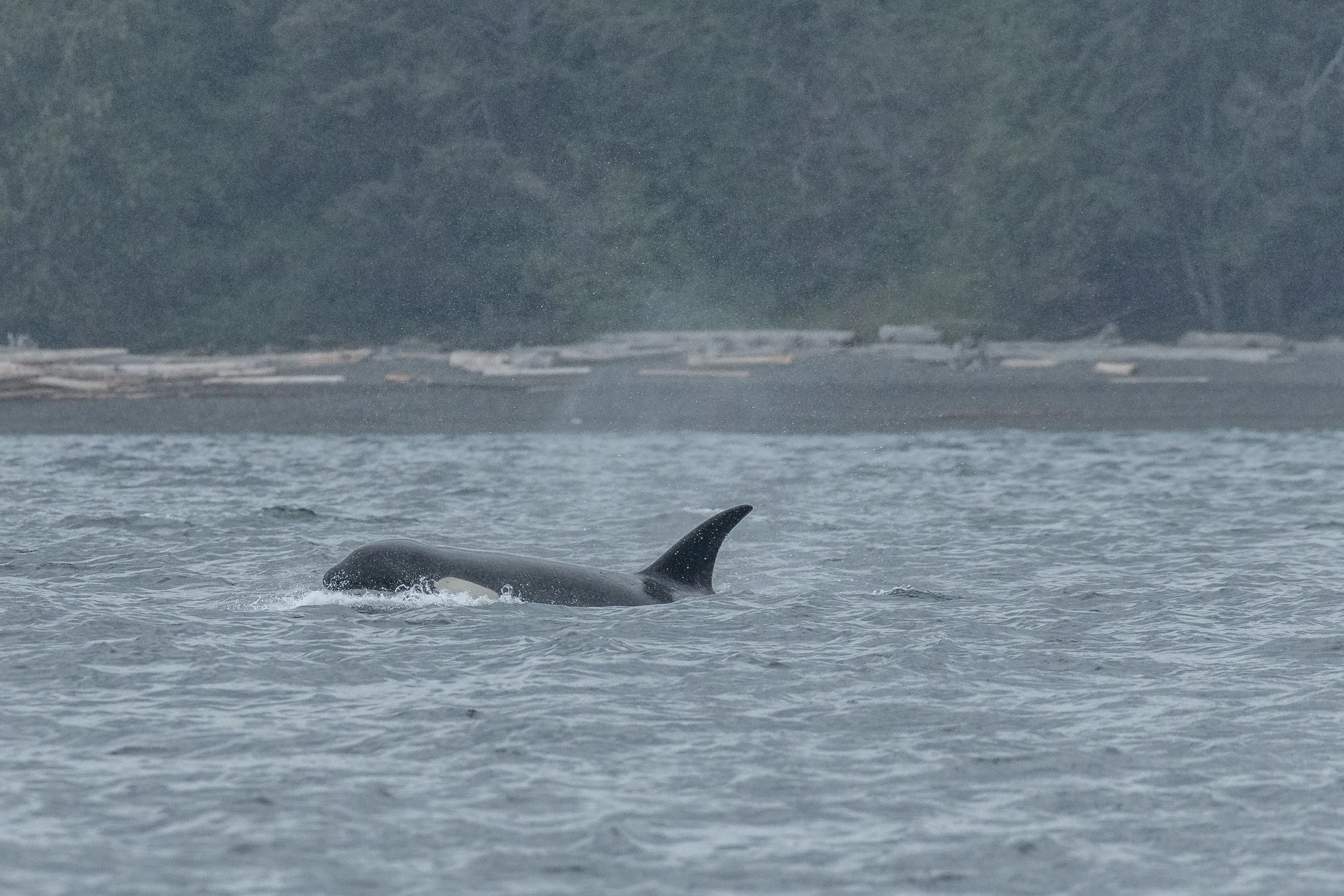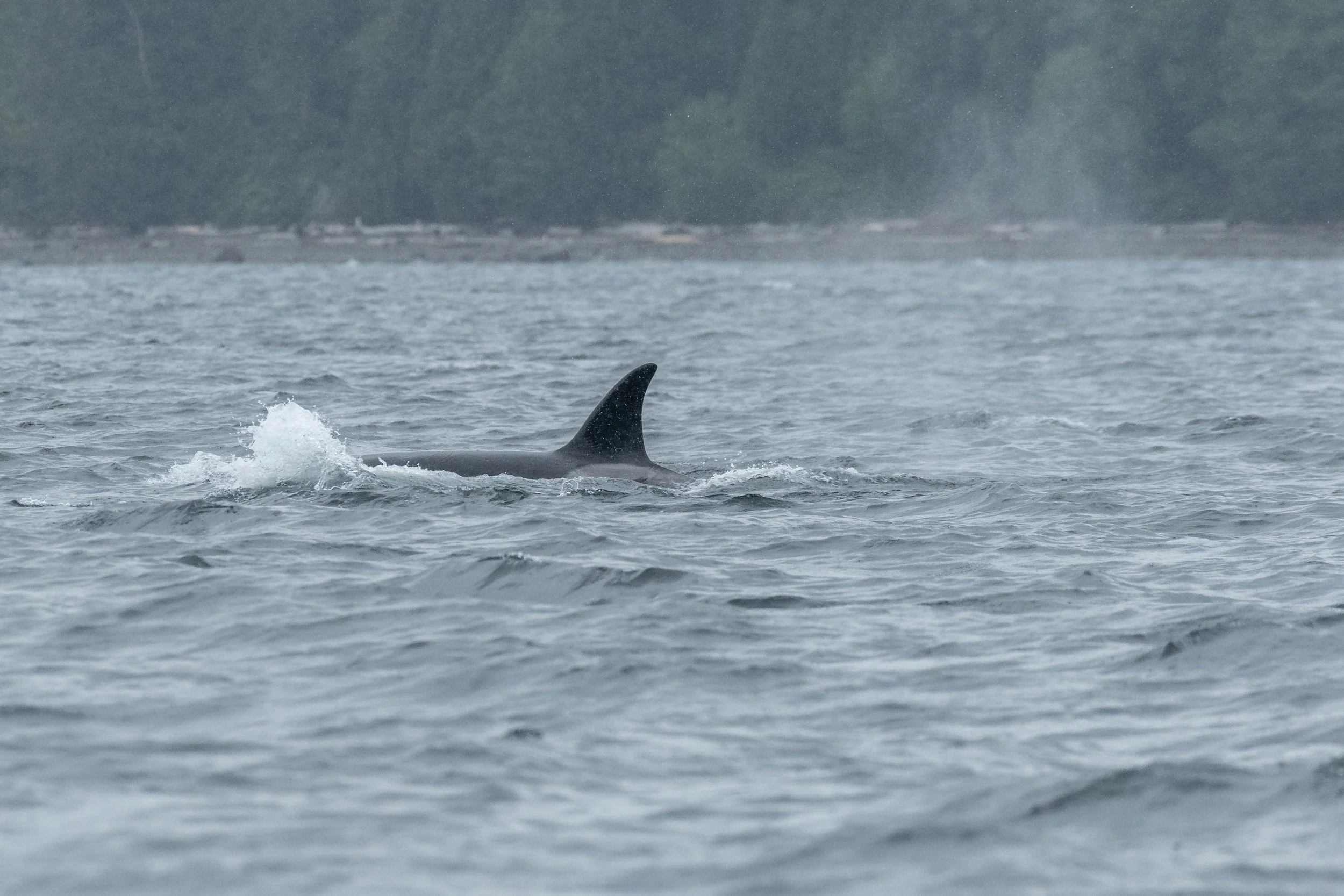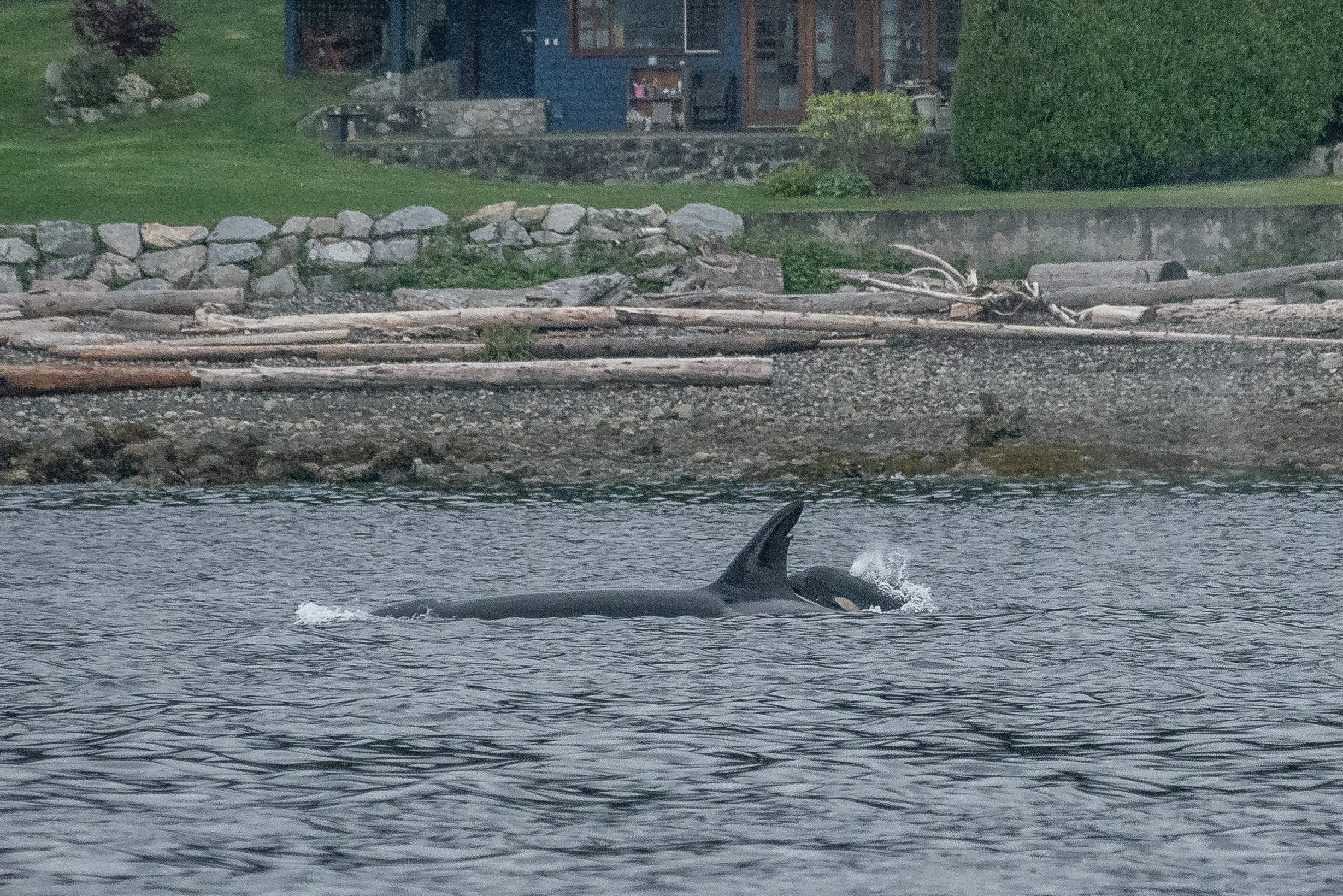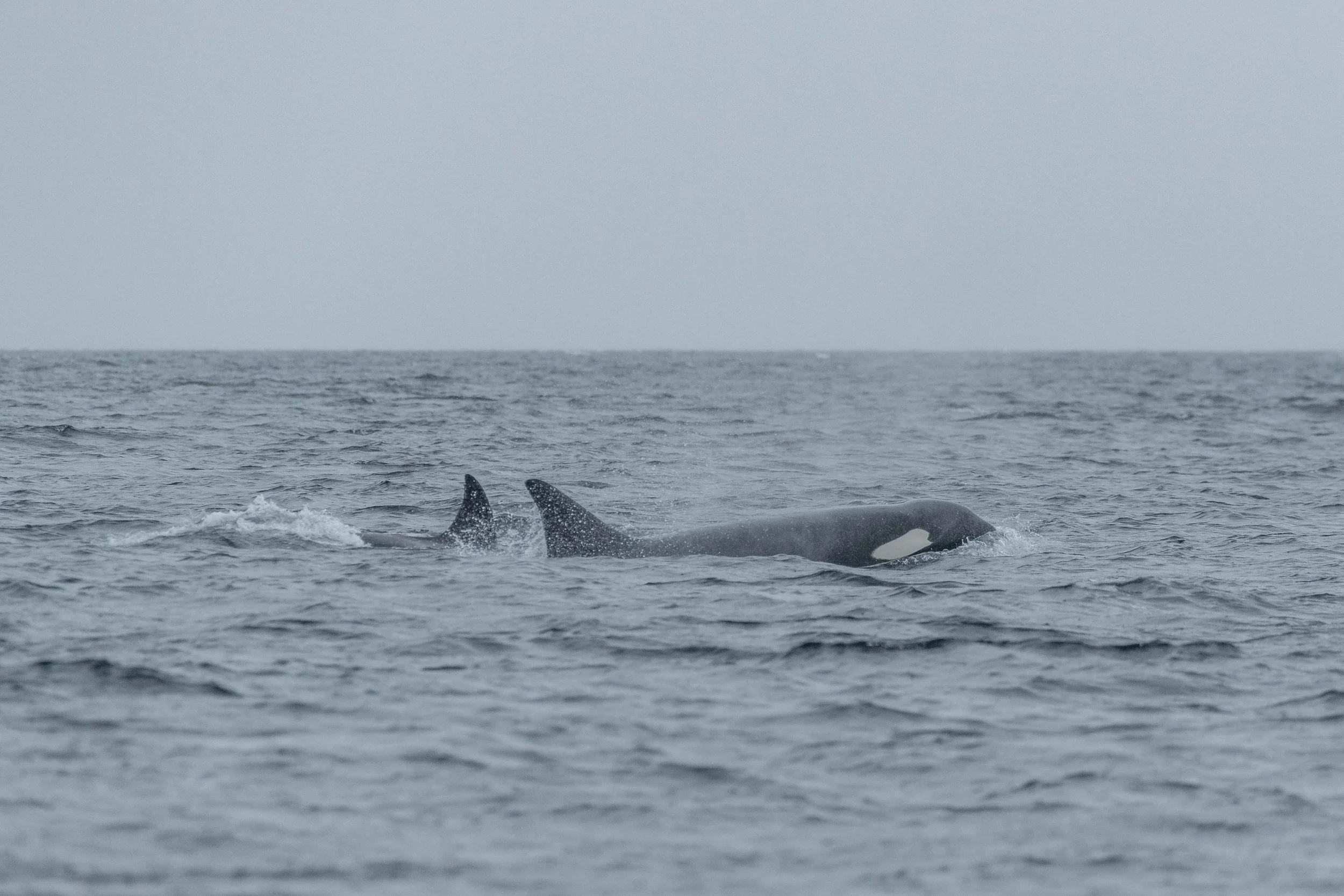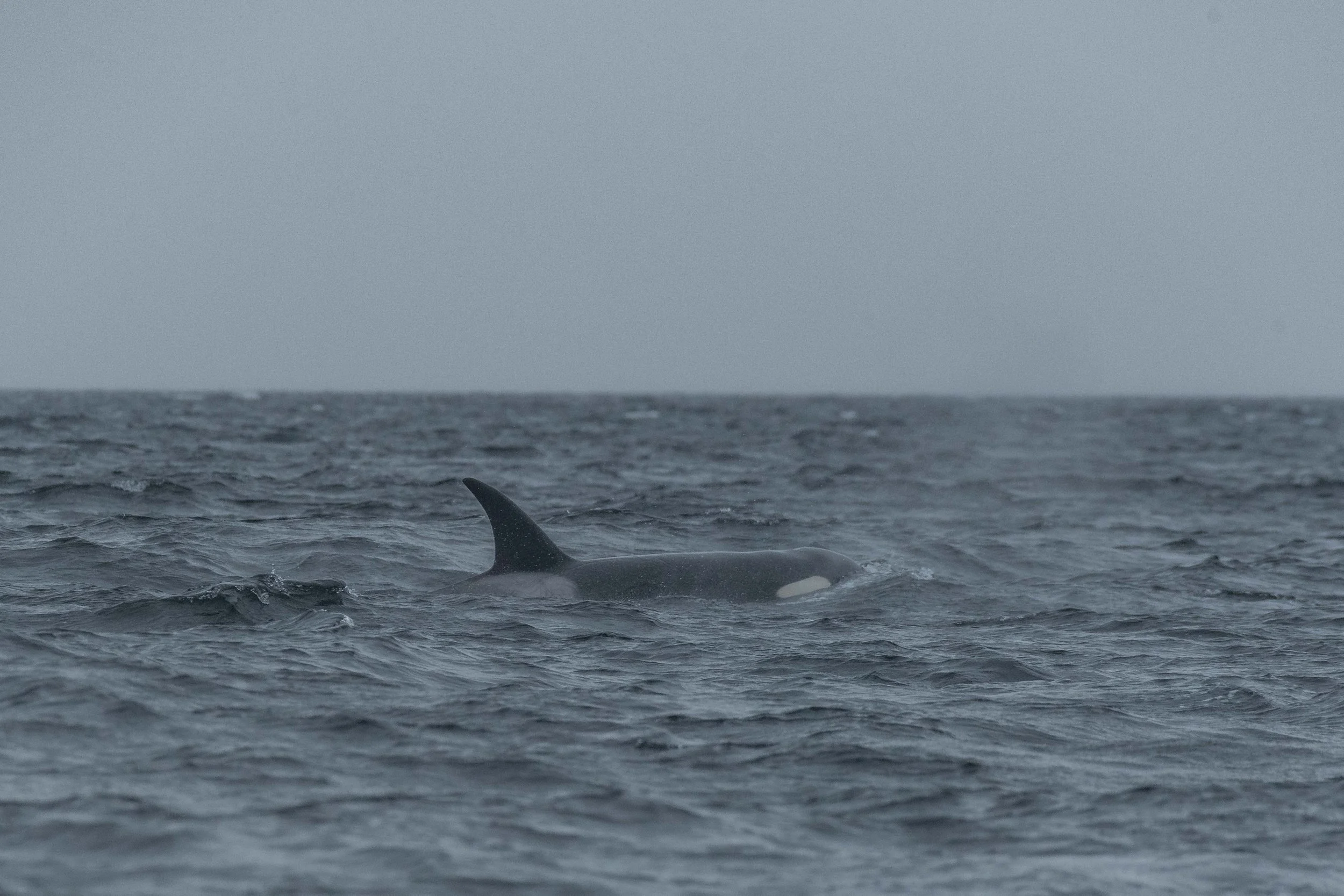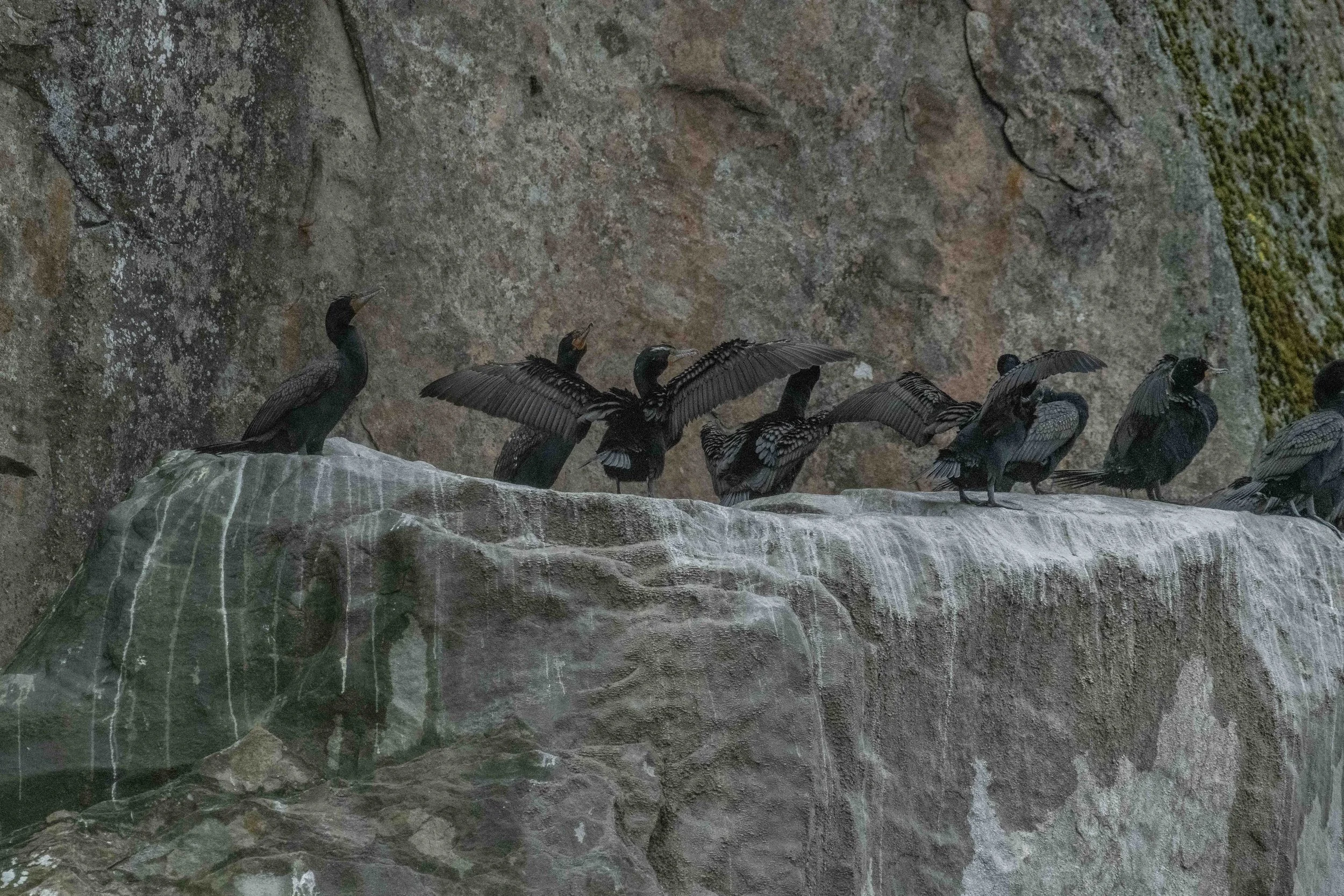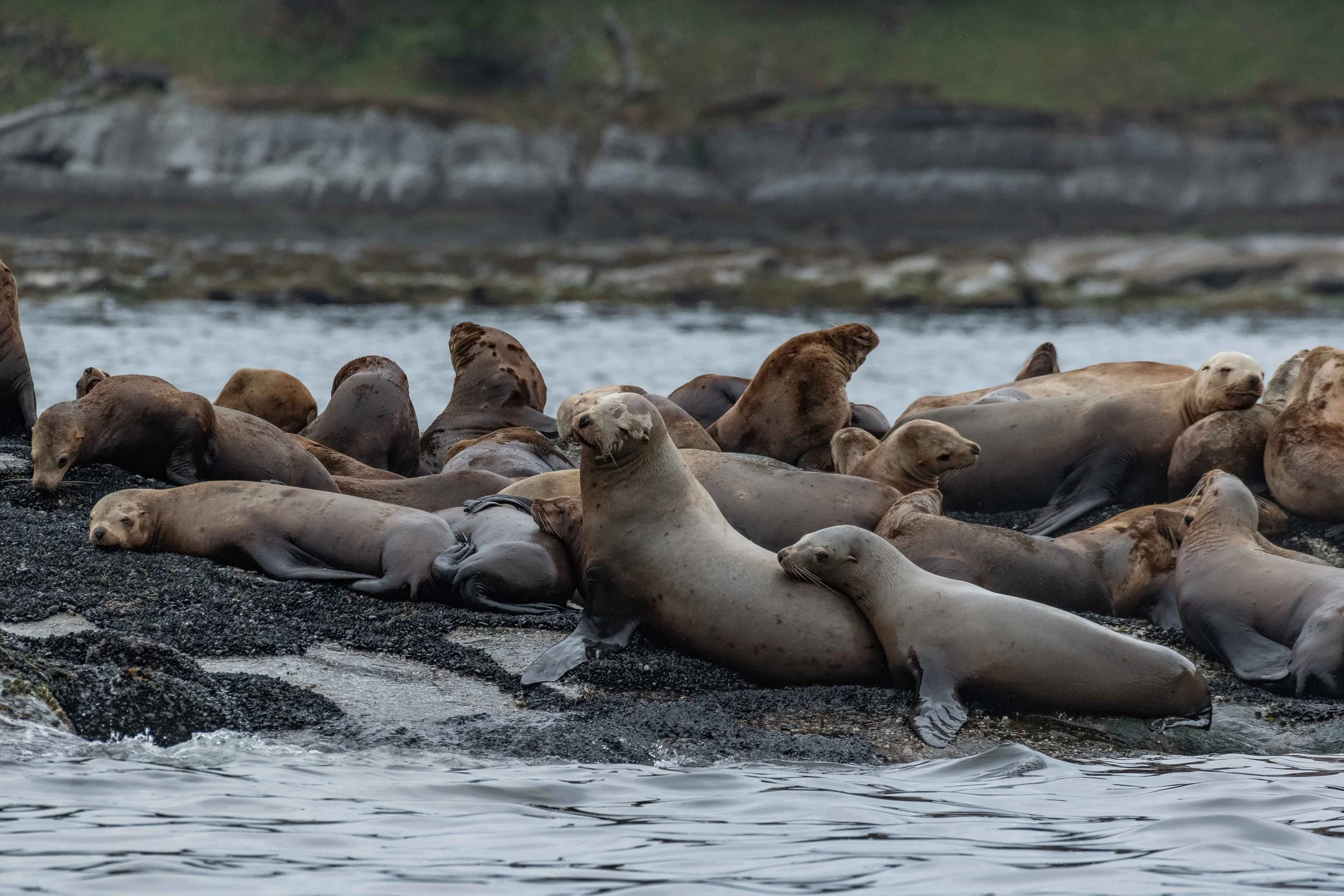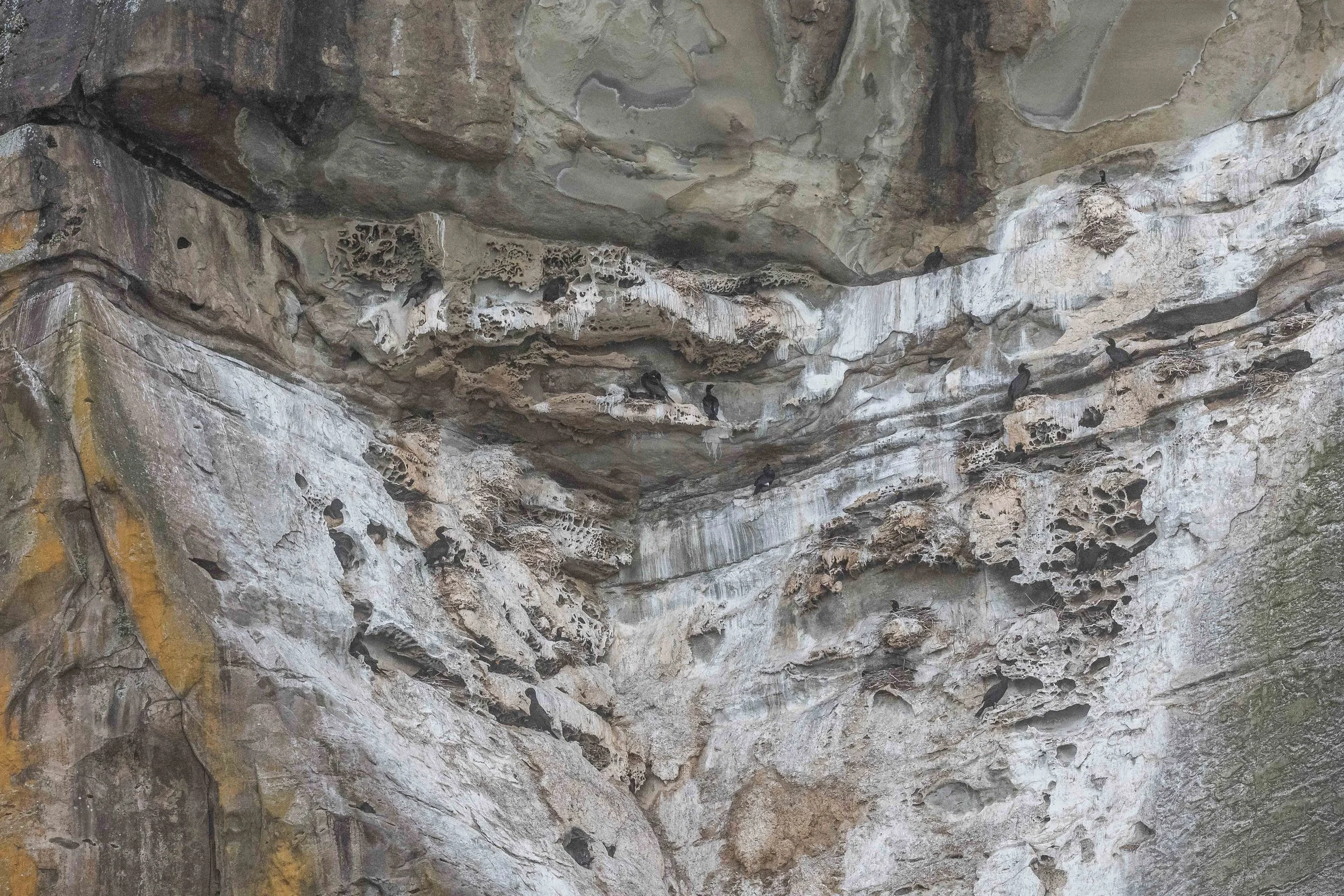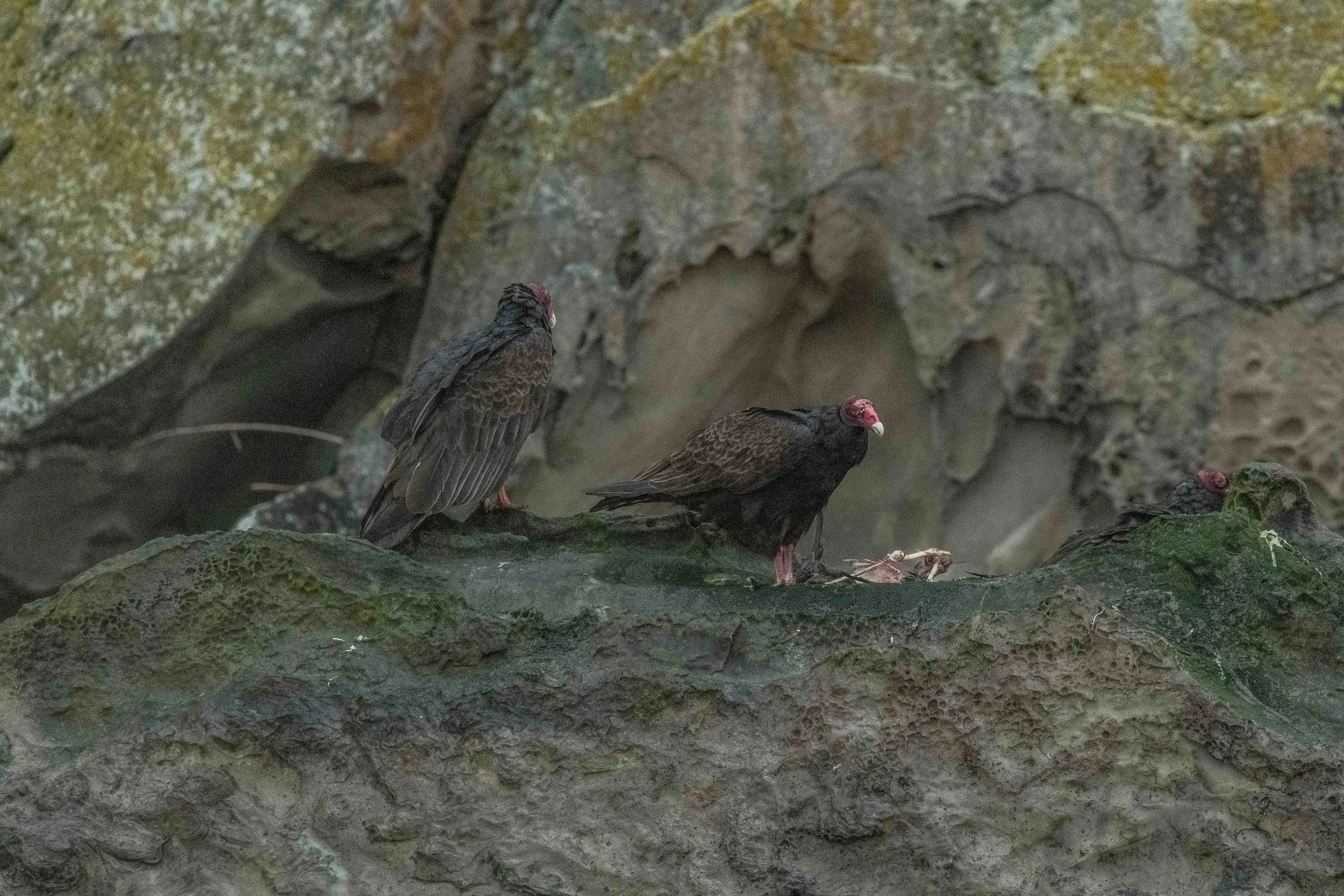May 5, 2024 - The Howe Sound T-party continues Plus Kata the Humpback!
We left the dock on the afternoon of May 5th and guess what? There were reports of whales in Howe Sound again! Since we had three boats out this day we sent one right there to help the Vancouver Boats search the area. The other two vessels searched in the Strait of Georgia a bit more before continuing on to Howe Sound. While the Howe Sound boat found a pod of Orca, the other two ended up seeing a humpback whale who we recognized almost immediately thanks to their very distinct dorsal fin. It was BCY1218 Kata again!
This mark on its dorsal fin, as well as the other little scrapes along its body, makes it seem like this little whale has been entangled. The mark on its dorsal fin looks like it’s the right shape for a rope, likely from a crab trap. It’s estimated in BC that over 80% of the humpback whales have some evidence of entanglement or ship strikes here in BC. This just goes to show how resilient these animals are that they can overcome such hardships and still continue on and be healthy and happy individuals!
We stayed with Kata for a little while before we continued over to Howe Sound to see the orca that the other boat was with.
This pod was easy to ID right away since we have been seeing these whales for the last few days travelling somewhere in Howe Sound. It was the T124As, T086A3s and the two members of the T071Bs spending time together. The whales present today were:
T071B1 Zengo ♀ (2013)
T071B2 Tasli/Nemo ♂ (2018)
T086A3 Tyndall ♀ (2011)
T086A3A (2024)
T124A2 Elkugu ♀ (2001)
T124A2A Agafia ♂ (2013)
T124A2B Litton ♀ (2016)
Today these whales were a little sleepy, travelling slowly through the sound with just the youngster showing off once in a while. Our orca do what is called Unihemispheric Sleep, meaning that they only turn off half of their brains at a time to rest. Orca and other whales have to think about opening their blowholes to breathe, so if they turned it off for 8 hours of rest they would end up suffocating. Resting half at a time allows them to continue their everyday activities at a slower pace while getting some much-needed rest at the same time.
The good thing about getting to see a resting pod of whales is that they spend a lot of time at the surface and tend to move a little bit slower than usual travel. It allowed us to get some really cute baby pictures!
We also got some great photos of the other wildlife that we saw along the way, all of which were taken by the marine Naturalists onboard, Aly Kohlman, Des Poier, and Hayleigh Hilbert!
BCY1218 Kata. Photo by Aly Kohlman.
BCY1218 Kata. Photo by Aly Kohlman.
BCY1218 Kata’s distinct dorsal fin. Photo by Aly Kohlman.
T124A2 Elkugu. Photo by Hayleigh Hilbert.
Coming up for a breath. Photo by Hayleigh Hilbert.
T071B1 Zengo. Photo by Hayleigh Hilbert.
T124A2 Elkugu. Photo by Hayleigh Hilbert.
T124A1A Agafia. Photo by Aly Kohlman.
T086A3 Tyndall. Photo by Aly Kohlman.
T086A3 Tyndall and T086A3A. Photo by Aly Kohlman.
T071B2 Tasli/Nemo. Photo by Aly Kohlman.
T124A2 Elkugu. Photo by Aly Kohlman.
T086A3 Tyndall and T086A3A. Photo by Hayleigh Hilbert.
T086A3 Tyndall and T086A3A. Photo by Hayleigh Hilbert.
T086A3 Tyndall and T086A3A. Photo by Hayleigh Hilbert.
T124A2 Elkugu and T124A2B Litton. Photo by Aly Kohlman.
T071B1 Zengo and T124A2 Elkugu. Photo by Aly Kohlman.
T124A2A Agafia. Photo by Aly Kohlman.
Cormorants fluffed up and drying. Photo by Aly Kohlman.
A Bald Eagle at the tip of a dead tree. Photo by Des Poier.
Nap time. Photo by Aly Kohlman.
Photo by Aly Kohlman.
Just the very tip of some harbour seal faces. Photo by Des Poier.
Cormorants clutching onto the Gabriola Bluffs. Photo by Des Poier.
A trio of Turkey Vultures. Photo by Aly Kohlman.
Look at how shiny and clean this Turkey Vulture’s beak is! Photo by Aly Kohlman.
A young Bald Eagle perched up high in the rain. Photo by Des Poier.
Busily maintaining their nest. Photo by Des Poier.

